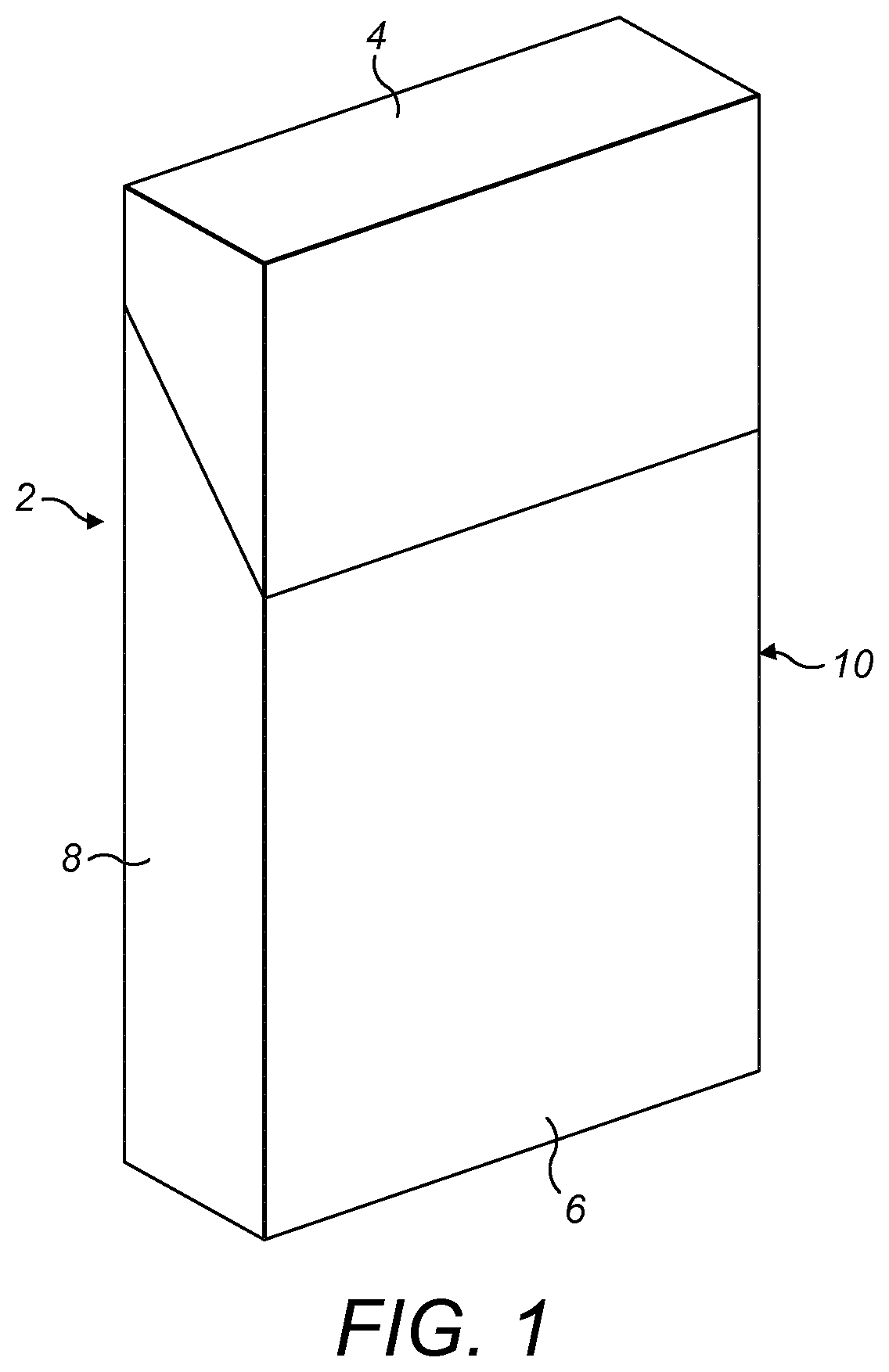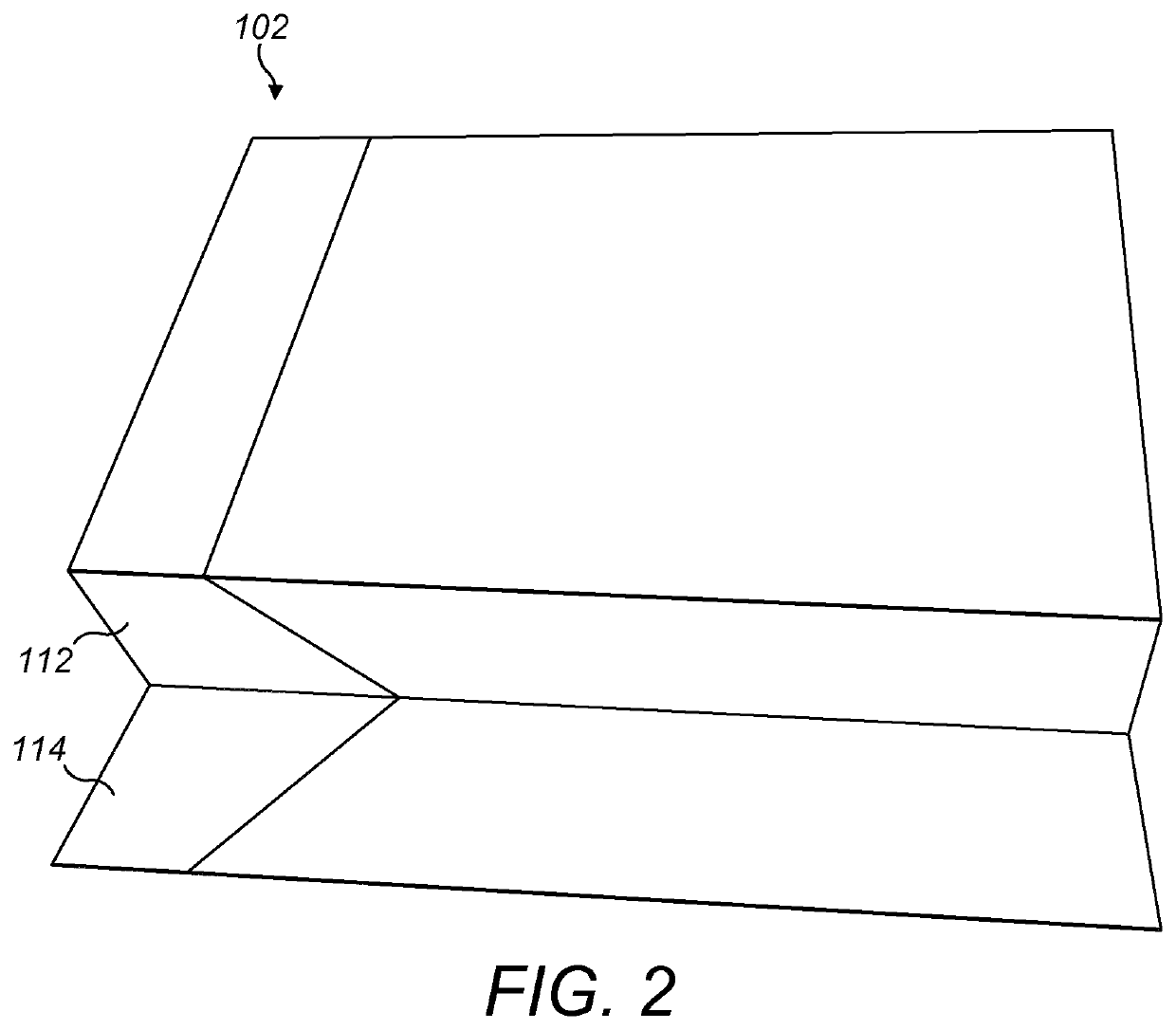Blank for forming a container
a container and blank technology, applied in the field of blank, can solve the problem of unsuitable application of adhesives, and achieve the effect of bonded more effectively
- Summary
- Abstract
- Description
- Claims
- Application Information
AI Technical Summary
Benefits of technology
Problems solved by technology
Method used
Image
Examples
Embodiment Construction
[0038]FIG. 3 is a plan view of an upper surface 202 of a blank 200. The upper surface 202 of the blank is printed in a conventional manner using an ink, varnish, lacquer, or a combination thereof, to create a design and include legally required information, such as health warnings, or manufacturing details. The reverse surface of the blank 200 is unprinted in this embodiment. However, it is possible that the reverse surface could also be printed, at least partially, so that internal surfaces of the container include designs or information.
[0039]The blank 200 includes cut lines (indicated with dotted lines in FIG. 3) and fold lines (indicated with solid lines in FIG. 3). A hinge line 220 is provided between a lid 222 and the remainder of the pack. The upper surface 202 of the blank 200 includes a front panel 210, a back panel 212 and a bottom panel 214. When the blank 200 is folded and formed around a bundle of smoking articles, the front panel 210, back panel 212 and bottom panel 21...
PUM
| Property | Measurement | Unit |
|---|---|---|
| surface tension | aaaaa | aaaaa |
| surface tension | aaaaa | aaaaa |
| particle size | aaaaa | aaaaa |
Abstract
Description
Claims
Application Information
 Login to View More
Login to View More - R&D
- Intellectual Property
- Life Sciences
- Materials
- Tech Scout
- Unparalleled Data Quality
- Higher Quality Content
- 60% Fewer Hallucinations
Browse by: Latest US Patents, China's latest patents, Technical Efficacy Thesaurus, Application Domain, Technology Topic, Popular Technical Reports.
© 2025 PatSnap. All rights reserved.Legal|Privacy policy|Modern Slavery Act Transparency Statement|Sitemap|About US| Contact US: help@patsnap.com



